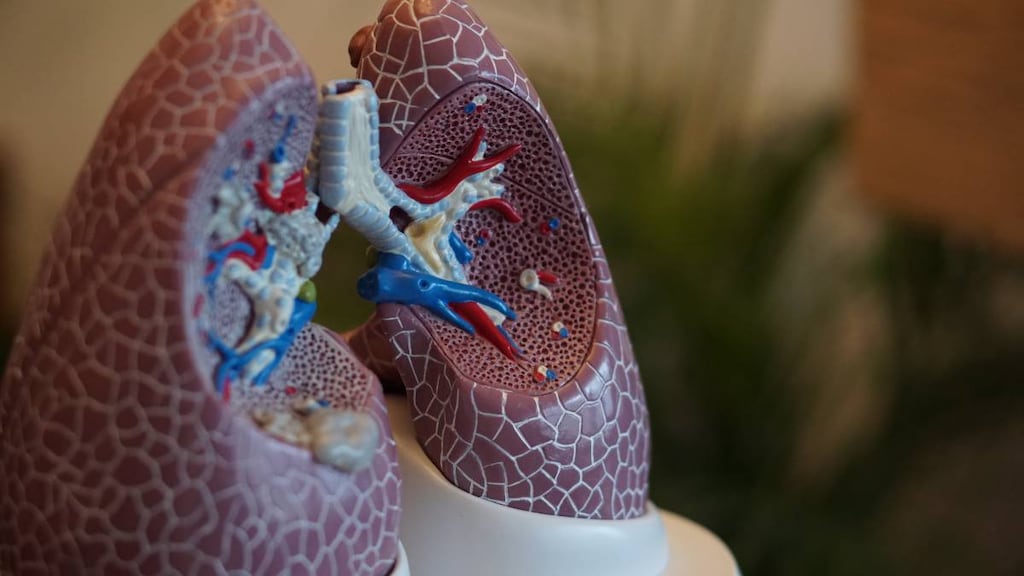Dosage Forms
Excipient information presented when available (limited, particularly for generics); consult specific product labeling.
Tablet, Oral:
Spectracef: 400 mg [contains sodium caseinate]
Generic: 200 mg, 400 mg
Pharmacology
Mechanism of Action
Inhibits bacterial cell wall synthesis by binding to one or more of the penicillin-binding proteins (PBPs) which in turn inhibits the final transpeptidation step of peptidoglycan synthesis in bacterial cell walls, thus inhibiting cell wall biosynthesis. Bacteria eventually lyse due to ongoing activity of cell wall autolytic enzymes (autolysins and murein hydrolases) while cell wall assembly is arrested.
Pharmacokinetics/Pharmacodynamics
Distribution
9.3 ± 1.6 L
Metabolism
Cefditoren pivoxil is hydrolyzed by esterases to cefditoren (active) and pivalate; cefditoren is not appreciable metabolized
Excretion
Urine (as cefditoren and pivaloylcarnitine)
Time to Peak
1.5 to 3 hours
Half-Life Elimination
1.6 ± 0.4 hours; increased with moderate (2.7 hours) and severe (4.7 hours) renal impairment
Protein Binding
88% (in vitro), primarily to albumin
Use in Specific Populations
Special Populations: Renal Function Impairment
Moderate impairment (CrCl 30 to 49 mL/minute/1.73 m2): Unbound Cmax is 90% higher, AUC is 232% higher
Severe impairment (CrCl less than 30 mL/minute/1.73 m2): Unbound Cmax is 114% higher, AUC is 324% higher
Special Populations: Elderly
Cmax is increased 26% and AUC 33%, half-life is 16% to 26% longer, and renal clearance is 20% to 24% lower.
Use: Labeled Indications
Treatment of acute bacterial exacerbation of chronic bronchitis or community-acquired pneumonia (due to susceptible organisms including Haemophilus influenzae, Haemophilus parainfluenzae, Streptococcus pneumoniae-penicillin susceptible only, Moraxella catarrhalis); pharyngitis or tonsillitis (Streptococcus pyogenes); and uncomplicated skin and skin-structure infections (Staphylococcus aureus - not MRSA, Streptococcus pyogenes)
Contraindications
Hypersensitivity to cefditoren, any component of the formulation, other cephalosporins, or milk protein; carnitine deficiency or inborn errors of metabolism that may result in clinically significant carnitine deficiency.
Dosage and Administration
Dosing: Adult
Acute bacterial exacerbation of chronic bronchitis: Oral: 400 mg twice daily for 10 days
Community-acquired pneumonia: Oral: 400 mg twice daily for 14 days
Pharyngitis, tonsillitis, uncomplicated skin and skin structure infections: Oral: 200 mg twice daily for 10 days
Dosing: Geriatric
Refer to adult dosing.
Dosing: Pediatric
Bronchitis, chronic; acute bacterial exacerbation: Children ≥12 years and Adolescents: Oral: 400 mg twice daily for 10 days.
Pharyngitis, tonsillitis:
Infants ≥8 months and Children: Limited data available: Oral: 3 mg/kg/dose 3 times daily for 5 days; dosing based on a prospective study comparing 5 days of cefditoren (n=103, age range: 0.7 to 12.4 years) to 10 days of amoxicillin (n=155); efficacy and tolerability were similar for both groups; Note: Cefditoren was administered as a granule formulation that is not available in the US (Ozaki 2008).
Children ≥12 years and Adolescents: Oral: 200 mg twice daily for 10 days.
Pneumonia, community-acquired: Children ≥12 years and Adolescents: Oral: 400 mg twice daily for 10 to 14 days. Note: Based on experience with other antibiotics, a shorter duration (10 days) of therapy may be appropriate based on patient severity and response (IDSA [Bradley 2011]).
Rhinosinusitis, acute bacterial: Limited data available: Children and Adolescents ≤15 years: Oral: 4 to 6 mg/kg/dose twice daily for 14 day; reported maximum daily dose: 400 mg/day (Poachanukoon 2008; Poachanukoon 2015); dosing based on two prospective studies. In one trial, cefditoren (4 to 6 mg/kg/dose twice daily) (n=66) was compared to high-dose amoxicillin/clavulanate (n=72) for acute bacterial rhinosinusitis in patients aged 1 to 15 years; both treatments offered similar efficacy; however, cefditoren was associated with less diarrhea (Poachanukoon 2008). Another study compared low-dose cefditoren (4 to 6 mg/kg/dose twice daily) to high-dose cefditoren (8 to 12 mg/kg/dose twice daily); efficacy and tolerability were similar between the groups (Poachanukoon 2015). Note: Cefditoren was administered as a granule formulation that is not available in the US.
Skin and skin structure infections, uncomplicated: Children ≥12 years and Adolescents: Oral: 200 mg twice daily for 10 days.
Administration
Administer with meals.
Dietary Considerations
Cefditoren should be taken with meals. Plasma carnitine levels are decreased during therapy (39% with 200 mg dosing, 63% with 400 mg dosing); normal concentrations return within 7-10 days after treatment is discontinued.
Storage
Store at 25°C (77°F); excursions permitted between 15°C and 30°C (59°F and 86°F). Protect from light and moisture.
Drug Interactions
Antacids: May decrease the serum concentration of Cefditoren. Management: Concomitant use of cefditoren with antacids is not recommended. Consider alternative methods to control acid reflux (eg, diet modification) or alternative antimicrobial therapy. If antacid therapy can not be avoided, separate dosing by several hours. Consider therapy modification
Histamine H2 Receptor Antagonists: May decrease the serum concentration of Cefditoren. Management: Concomitant use of cefditoren with H2-antagonists and antacids is not recommended. Consider alternative methods to control acid reflux (eg, diet modification) or alternative antimicrobial therapy if use of H2-antagonists can not be avoided. Consider therapy modification
Probenecid: May increase the serum concentration of Cephalosporins. Monitor therapy
Proton Pump Inhibitors: May decrease the serum concentration of Cefditoren. Management: If possible, avoid use of cefditoren with proton pump inhibitors (PPIs). Consider alternative methods to minimize/control acid reflux (eg, diet modification) or alternative antimicrobial therapy if use of PPIs can not be avoided. Consider therapy modification
Vitamin K Antagonists (eg, warfarin): Cephalosporins may enhance the anticoagulant effect of Vitamin K Antagonists. Monitor therapy
Test Interactions
May induce a positive direct Coomb’s test. May cause a false-negative ferricyanide test. Glucose oxidase or hexokinase methods recommended for blood/plasma glucose determinations. False-positive urine glucose test when using copper reduction based assays (eg, Clinitest®).
Adverse Reactions
>10%: Gastrointestinal: Diarrhea (11% to 15%)
1% to 10%:
Central nervous system: Headache (2% to 3%)
Endocrine & metabolic: Increased serum glucose (1% to 2%)
Gastrointestinal: Nausea (4% to 6%), abdominal pain (2%), dyspepsia (1% to 2%), vomiting (1%)
Genitourinary: Vulvovaginal candidiasis (3% to 6%), hematuria (3%), urine abnormality (increased leukocytes: 2%)
Hematologic & oncologic: Decreased hematocrit (2%)
<1%, postmarketing, and/or case reports: Abnormal dreams, acute renal failure, decreased serum albumin, anorexia, arthralgia, asthma, change in WBC count (decrease or increase), coagulation time increased, constipation, decreased hemoglobin, decreased neutrophils, decreased serum calcium, decreased serum sodium, diaphoresis, dizziness, drowsiness, dysgeusia, eosinophilic pneumonitis, eosinophilia, eructation, erythema multiforme, facial edema, fever, flatulence, fungal infection, gastritis, gastrointestinal disease, hyperglycemia, hypersensitivity reaction, hypochloremia, hypophosphatemia, increased appetite, increased blood urea nitrogen, increased serum ALT, increased serum AST, increased serum cholesterol, increased serum potassium, increased thirst, insomnia, interstitial pneumonitis, leukopenia, leukorrhea, lymphocytosis, myalgia, nervousness, oral candidiasis, oral mucosa ulcer, pain, peripheral edema, pharyngitis, positive direct Coombs test, pseudomembranous colitis, proteinuria, pruritus, rhinitis, sinusitis, skin rash, Stevens-Johnson syndrome, stomatitis, thrombocythemia, thrombocytopenia, toxic epidermal necrolysis, urinary frequency, urticaria, vaginitis, weakness, weight loss, xerostomia
Warnings/Precautions
Concerns related to adverse effects:
- Elevated INR: May be associated with increased INR, especially in nutritionally-deficient patients, prolonged treatment, hepatic or renal disease.
- Penicillin allergy: Use with caution in patients with a history of penicillin allergy, especially IgE-mediated reactions (eg, anaphylaxis, angioedema, urticaria).
- Superinfection: Prolonged use may result in fungal or bacterial superinfection, including C. difficile-associated diarrhea (CDAD) and pseudomembranous colitis; CDAD has been observed >2 months postantibiotic treatment.
Disease-related concerns:
- Carnitine deficiency: Do not use in patients with carnitine deficiency; causes renal excretion of carnitine.
- Hepatic impairment: Use with caution in patients with hepatic impairment.
- Renal impairment: Use with caution in patients with renal impairment; modify dosage in moderate-to-severe impairment.
- Seizure disorders: Use with caution in patients with a history of seizure disorder; high levels, particularly in the presence of renal impairment, may increase risk of seizures.
Dosage form specific issues:
- Sodium caseinate: Tablets contain sodium caseinate, which may cause hypersensitivity reactions in patients with milk protein hypersensitivity; this does not affect patients with lactose intolerance.
Other warnings/precautions:
- Duration of therapy: Not for long-term therapy due to the possible development of carnitine deficiency over time.
Monitoring Parameters
Monitor renal function. Observe for signs and symptoms of anaphylaxis during first dose.
Pregnancy
Pregnancy Risk Factor
B
Pregnancy Considerations
Adverse events have not been observed in animal reproduction studies. An increase in most types of birth defects was not found following first trimester exposure to cephalosporins.
Patient Education
- Discuss specific use of drug and side effects with patient as it relates to treatment. (HCAHPS: During this hospital stay, were you given any medicine that you had not taken before? Before giving you any new medicine, how often did hospital staff tell you what the medicine was for? How often did hospital staff describe possible side effects in a way you could understand?)
- Patient may experience nausea or diarrhea. Have patient report immediately to prescriber bruising, bleeding, chills, sore throat, severe loss of strength and energy, unable to pass urine, passing out, seizures, vaginal pain, itching, and discharge, or signs of Clostridium difficile (C. diff)-associated diarrhea (abdominal pain or cramps, severe diarrhea or watery stools, or bloody stools) (HCAHPS).
- Educate patient about signs of a significant reaction (eg, wheezing; chest tightness; fever; itching; bad cough; blue skin color; seizures; or swelling of face, lips, tongue, or throat). Note: This is not a comprehensive list of all side effects. Patient should consult prescriber for additional questions.
Intended Use and Disclaimer: Should not be printed and given to patients. This information is intended to serve as a concise initial reference for healthcare professionals to use when discussing medications with a patient. You must ultimately rely on your own discretion, experience and judgment in diagnosing, treating and advising patients.

